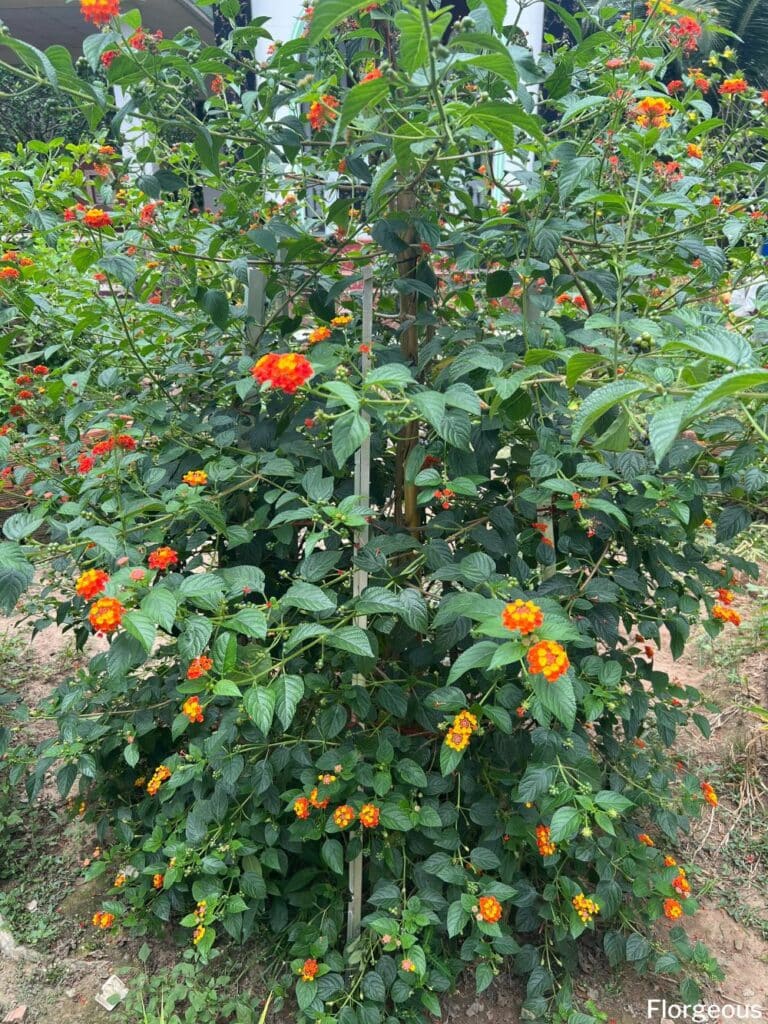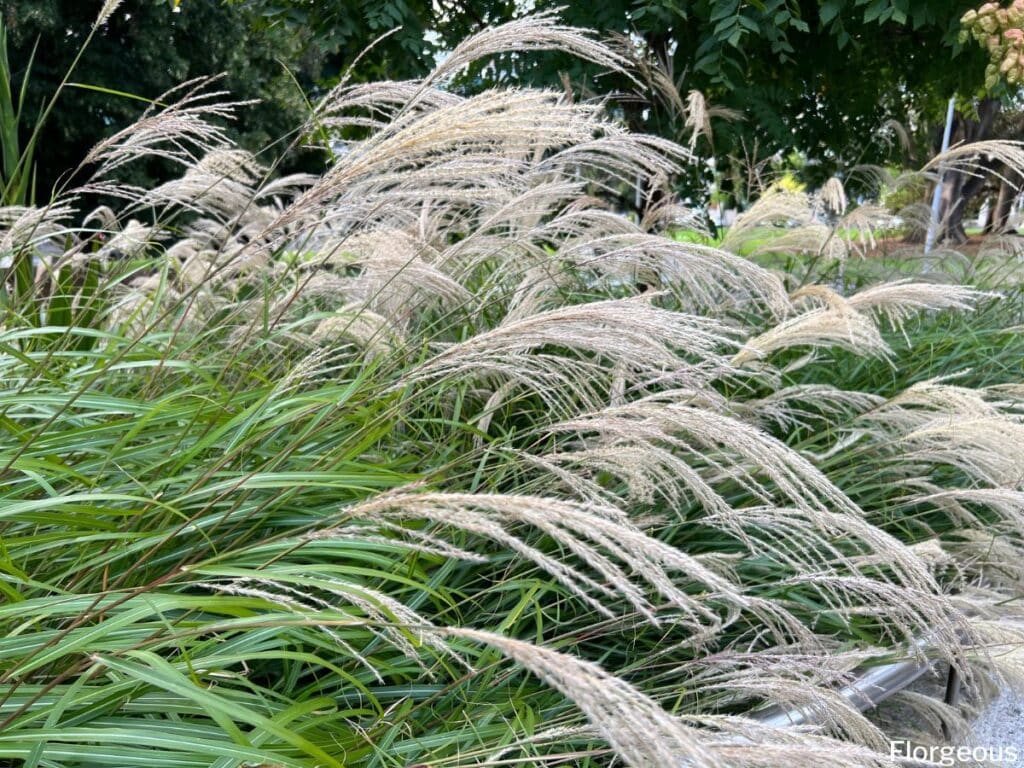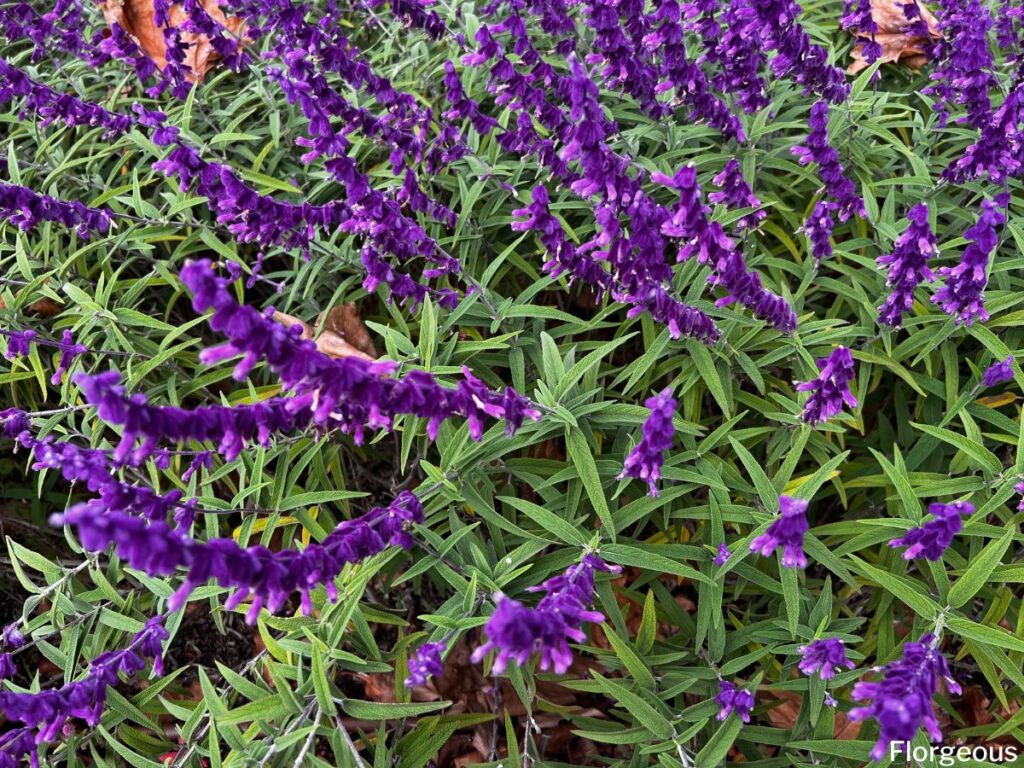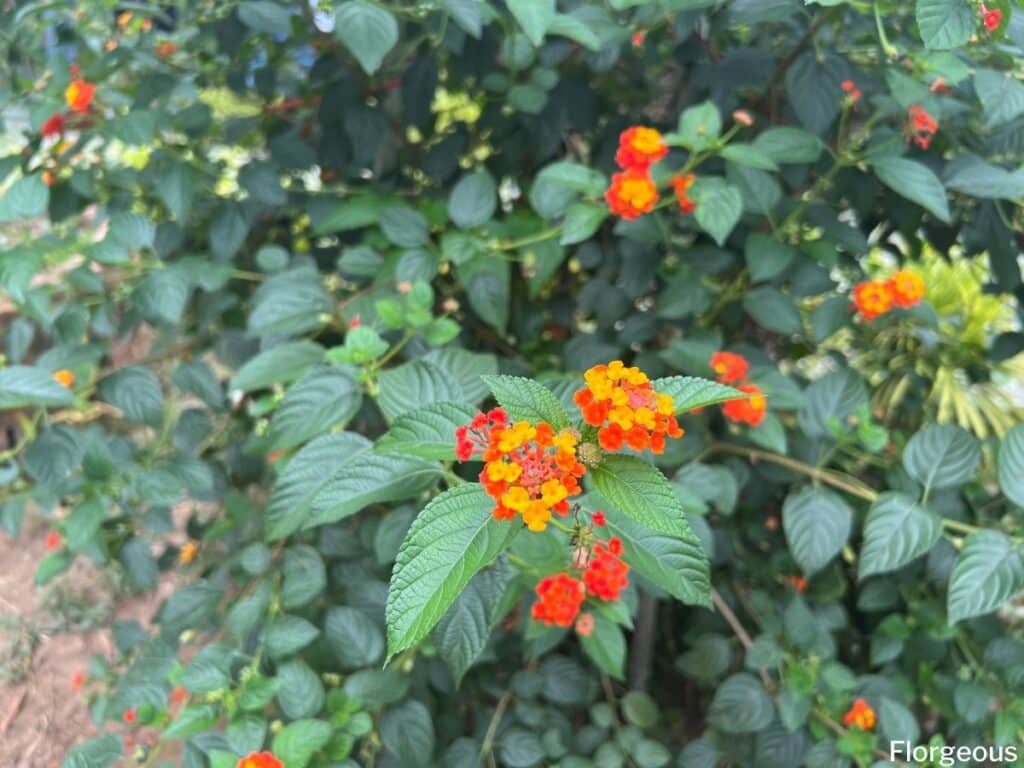Lantanas (Lantana Camara), also known as red sage, shrub verbena, or yellow sage, can be very useful in gardens because they produce attractive blooms that can lure plenty of beneficial insects to your garden.
These evergreens are also quite functional as border plants and they are often used as ground covers to keep weeds from sprouting or to keep the soil inside garden beds moist.
Lantanas look their absolute best if you pair them with companion plants such as ornamental grasses, autumn joy plants, butterfly bushes, salvias, angelonias, baby sunroses, moss roses, or dusty miller to create vivid garden spaces.
Let’s take a closer look at these companion plants and discuss some great landscaping ideas that can make your Lantana garden look even better.
What to Plant with Lantana Flowers

If you want your lantanas to grow healthy and strong then it is best to combine them with plant species with similar growing needs. You can check our lantana care guide to learn more.
Lantana flowers are drought-tolerant shrubs that require lots of direct sunlight to flourish. They need a minimum of 8 hours of direct sunlight or they won’t flower.
These charming flowers can tolerate a little bit of afternoon shade but won’t survive if they are grown in a shaded or dark area.
Newly planted lantanas can be watered regularly but, once established, these flowers only need to be watered once a week. The plants also grow their best if they are placed in well-drained soil that has lots of organic matter.
Here is a quick look at plant species that can also survive in a sunny location with minimal watering.
Ornamental Grasses

Most gardeners love to combine lantanas with ornamental grass because this can help you create a sense of movement in your garden.
For this type of pairing, it is best to select drought-tolerant grass varieties like fountain grass (Pennisetum alopecuroides), blue fescue grass (Festuca glauca), or switchgrass (Panicum vigatuum) in your garden.
These grass varieties will grow well in direct sun and should take well to the well-drained soil that lantanas love so much. They can also survive with minimal watering and are ideal for dry garden spaces.
When you are growing lantana with these types of plants, you should be careful to position the taller plants in the back and the shorter varieties in front of your flowering shrubs.
Sedum Autumn Joy
Autumn joy (Hylotelephium spectabile), also known as stonecrops, are good companion plants for lantanas because it is just as hardy and also produces beautiful clusters of flowers that will complement the lantana flowers very well.
Stonecrop flowers are very drought tolerant and don’t need a lot of water. The succulent stems and waxy leaves of this plant absorb moisture so it can survive during dry spells.
These low-maintenance plants can grow well in poor soils and it requires lots of direct sunlight in order to bloom and grow healthy.
Lantanas and stonecrop are of similar height (a maximum height of 2 feet tall) and both have shrub-like features. Because of their similar height and form, you can easily grow them next to one another to create showy hedges or combine them in garden beds as a vivid filler plant.
Butterfly Bush
Gardeners love to combine butterfly bush (Buddleja davidii), also known as summer lilac or orange eye, with lantanas because the vivid purple flowers of this evergreen plant will add lots of color and texture to your garden.
These beautiful flowers are ideal for a butterfly garden because they will also attract butterflies and bees which can bring your garden to life.
These lavender purple flowers can be planted in shade or semi-shade but you will get the most blooms if you grow them in full sun. The flowers will thrive if you plant them in well-drained soil with lots of organic matter and they are drought tolerant but will need weekly watering if rain is scarce.
Butterfly bushes can grow quite tall with a maximum height of up to 15 feet tall. The bushes can be pruned to keep them shorter but, ideally, it is best to position them behind your lantana flowers.
Salvia

Salvia (Salvia), also known as sage or garden sage, are also wonderful companion plants for dryer gardeners and they produce lots of colorful flowers that can bring your garden to life.
These perennials need at least six hours of direct sunlight to produce lots of colorful blooms but they can also survive in partial or light shade although they might produce fewer blooms in these shaded positions.
The hardy perennials will take well to most soil types as long as the soil drains well and they only need to be watered once a week.
There are over 1000 species of sage and most of them can look charming next to most lantana varieties. Gardeners often pair purple sage varieties (Salvia officinalis) with complementary lantana plants like yellow or pink varieties to form striking garden beds.
You can also combine blood sage (Salvia coccinea) with warmer-toned lantanas that have yellow flowers or orange peach flowers to create an attractive garden.
Sage and lantanas are of similar height and can easily be planted next to one another in the same garden bed.
Angelonia
Angelonia flowers (Angelonia), also known as summer snapdragons, will add lots of color and texture to your garden because they produce colorful flowers on tall spikes. These striking flowers will also attract butterflies and hummingbirds to your garden.
Angelonias are perennials but in colder climates, gardeners treat angelonia as annuals because they cannot tolerate the cold weather. The charming flowers should be planted in well-draining soil that is slightly acidic and they will flower best if they are planted in full sun. These low-maintenance flowers will keep flowering even through spells of drought.
Angelonia bushes can reach a height of up to 3 feet tall. Because of their height, it is pretty easy to combine them with lantanas to create a mixed garden bed with lots of showy flowers.
Baby Sunroses
Baby sunroses (Aptenia cordifolia), also known as heart-leaf, red aptenia or aptenias, can be terrific lantana companion plants if you are looking for a ground cover or spiller species to plant with lantana.
These water-wise plants prefer a full sun position but can also grow well in indirect light. In light shade, they won’t produce pink flowers but their waxy trailing leaves are just as attractive. The succulent plant grows well in free-draining soil and won’t survive if grown in moist conditions.
These trailing plants can look striking if they are used as a ground cover around lantanas. They are also functional for hanging baskets and will create an appealing waterfall effect if they trail out of your containers.
Moss Rose
Moss roses (Portulaca grandiflora) are also ideal companion plants if you are looking for a showy ground cover to fill up your garden bed.
This trailing succulent comes in many colors including dusty pink flowers, yellow flower species, and red flower species. The plants will quickly spread all over your garden bed to form a thick and wide mat with lots of vivid flowers all over.
Moss roses prefer a full sun position and they should be watered moderately or their root systems will quickly rot away. These flowers should be established in well-draining soil and they prefer rocky and sandy soil types.
Because it is a low-growing plant, it is best to plant moss roses in front of, or around your lantana plants. They can also be used in containers and can look charming if they lightly trail over the edge of your garden pots.
Dusty Miller

Dusty miller (Jacobaea martima), also known as silver ragwood, can be a terrific lantana companion plant if you are looking for an interesting foliage species to use as a border plant. This plant will produce creamy yellow flowers during midsummer but most gardens grow it for its interesting foliage. The leaves of this plant will transform into a showy silver color if it receives enough sunlight.
Dusty Miller is heat and drought-tolerant and will look its absolute best in full sun. In light shade, the leaves will become leggy and they will appear greener instead of vibrantly silver. This foliage species does need a little bit more water than lantanas but it can grow well in dryer conditions as long as you remember to water it at least once a week.
You can combine dusty millers among your beautiful lantanas for a vibrant garden or use this showy plant as a border around your lantana bed. Some gardeners also love to combine dusty millers and lantanas in containers because they can create a very interesting effect.
What NOT to Grow with Lantanas
Lantanas won’t grow well in a shaded position and they can develop root rot if they are planted in moist conditions.
Because they prefer a sunny and dry location, it is best not to pair them with shade and moisture-loving plant species like ferns, hostas, begonias, or elephant ears. These types of plants will only wilt and die in these hot and dry regions.
Lantanas are evergreen perennials that will stay heavily branched throughout the year. They won’t die back during winter time.
Because they are evergreens, it is usually best to combine them with other plants that will stay lush and green throughout the year. Annuals will need to be cleared out after each flowering season which can increase your garden maintenance.
Landscaping Ideas for Lantanas and Companions
Now that you know what to plant with lantana, it is time to look at some creative ways to use these flowers and their companions in your garden spaces.
Here is a quick look at some creative landscaping ideas that can help you create more beautiful spaces:
Dry Gardens
Lantanas and the companion plants we discussed in this guide are all perfect for dry garden spaces. These plants are all heat tolerant and don’t need much water to survive. They are ideal for water-efficient gardening projects like xeriscape projects.
To create a striking dry garden, you can mix different varieties of florals and grasses and add additional natural elements like rocks, pavers, and tree stumps to your garden. The vivid, cheery flowers brighten your garden throughout summer without too much effort from your side.
Mixed Borders or Hedges
Shrub plants like lantanas, butterfly bushes, and salvias can be mixed in lanes to form striking hedges. These hedges or borders are ideal for creating more contrast next to walkways or driveways in the sunny parts of your garden.
Container Gardens
Lantanas can grow very well in containers and are the perfect species for gorgeous container gardens. You can grow them in hanging baskets on a sunny patio or place the containers in a sunny spot indoors. For a particularly striking effect, you can combine different containers with different flowering species.
If you have a large container then you can also mix different flowering species in the same pot to create a mixed container.
Lantanas are perfect filler plants for showy containers and can be combined with a thriller variety like fountain grass or switch grass and a trailing plant like baby sunroses or moss roses that can spill over the edge of your hanging baskets or containers.
Final Thoughts
Lantanas are perfect plants for dry garden spaces and sunny locations. It can function well as a stand-alone plant in containers or you can combine it with companion plants like sedum autumn joy, bush, sage, angelonias, baby sunroses, moss roses, dusty miller, fountain grass, blue fescue grass, or other hardy plants to create garden beds that look even more striking.
We hope that you enjoyed our companion planting guide and that this guide gave you lots of insight so you can create your own attractive water-efficient garden.







